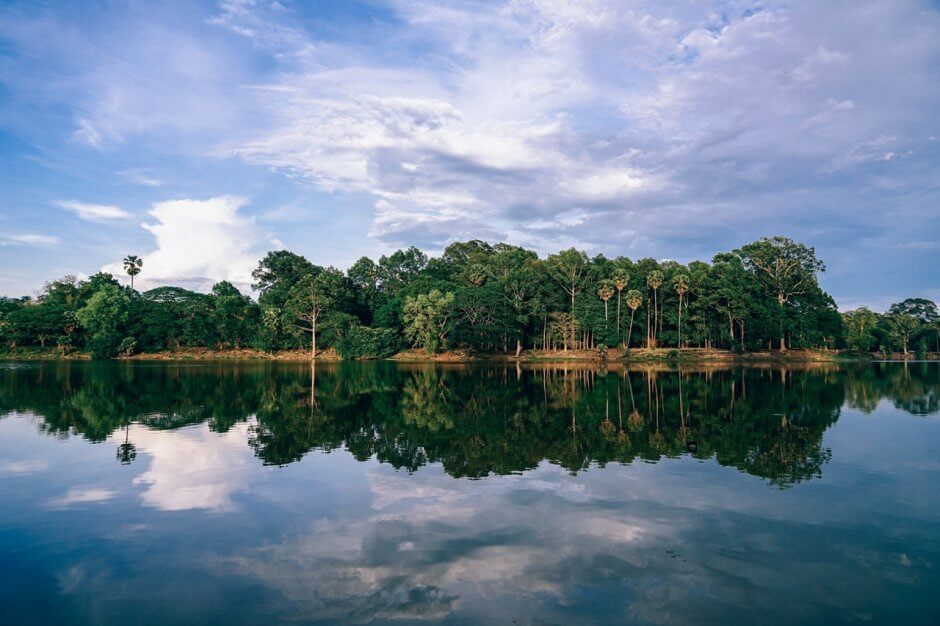In Innovation Spotlight, we explore some of the most promising innovations from around our community. This week, we take a look at an EIT Climate-KIC supported WWF initiative, the Landscape Finance Lab.
Land use accounts for one fourth of world emissions and potentially over one third of possible solutions. But currently, in terms of green finance, only one per cent is going to land-based solutions: Investors and land managers still struggle to generate high-quality and de-risked land-use projects.
In the meantime, major corporations are increasingly engaged with the concept of corporate social responsibility (CSR) and sustainability practices. With their brand power and capital, large corporations, in partnership with environmental organisations, have the potential to drive green finance towards land-based solutions, transforming industries and supply chains, and mitigating climate change.
The “Supply Chain and Landscape approach in the Eastern Plain Landscape (EPL) of Cambodia” (SCALE) is an H&M and WWF Landscape Finance Lab initiative to design a landscape investment programme for the textile industry and energy supply chains in Cambodia.
The programme will contribute to the SDGs by promoting sustainable energy materials in the textile industry (from sustainable wood fuel to agricultural waste) and by supporting the resilience of ecosystem services through a jurisdictional sourcing approach in the EPL.
The overall objectives of this landscape scale investment programme are: Hook carbon sinks and resilience into textile supply chain (and other industries at a later stage), engage the garment sector in an energy transition and leverage innovative climate finance.
“There are a number of ways corporations can act on climate. Most of the prominent companies have put measures into place to reduce their emissions by 2020 or 2030, in line with the two degrees UNFCCC target, and using science based targets to do so. This is the case of many WWF partners,” said Paul Chatterton, Founder and Lead, WWF Landscape Finance Lab. “Additionally, a growing number of companies have pledged to a zero deforestation supply chain by 2020 or 2030, engaging their operations in increasing climate resilience and carbon sinks. But, implementing these commitments is a complex and challenging issue that requires strong partnership and multi-stakeholder approaches.”
The Landscape Finance Lab can help turn these commitments into real results: The landscape sourcing prototypes developed by the lab will craft ad-hoc solutions to establish measures to transition to renewable energy, reduce carbon emissions, promote sustainable sourcing of materials and support biodiversity protection and ecosystem resilience.

The Landscape Finance Lab is pioneering an integrated approach that brings together sectors, scales and stakeholders. It incubates landscape programmes and sources, structures, designs and applies new financing solutions. By moving beyond silos of individual interests and working together around one common landscape vision, all stakeholders can find mutually beneficial solutions to achieve environmental, social and economic results.
The landscape incubator utilises innovative financial instruments to unlock new types of capital at scale from untapped sources. The Landscape Finance Lab employs market-driven approaches to create revenue streams that increase their financial viability. It helps landscape stakeholders create long-term holistic solutions over large areas with sustained finance. These landscapes span land and sea areas of more than one million hectares, attracting investments of over €100 million and are able to run sustainably for decades.
“Well managed landscapes can inspire shifts in trade and finance patterns towards sustainability. If we can show that a few landscapes can be sustainable then all landscapes can be sustainable,” said Natalia Krasnodebska, Community Lead, WWF Landscape Finance Lab. “We advocate globally for policies and incentives that stimulate sustainable landscape initiatives.”
The Landscape Finance Lab’s short-term goals are to bring its current landscapes to successful funding and show results in the landscape. In the long-term, it hopes to make sure the whole planet is covered in sustainably managed, regenerated landscapes.
Learn more about the lab’s current projects.

